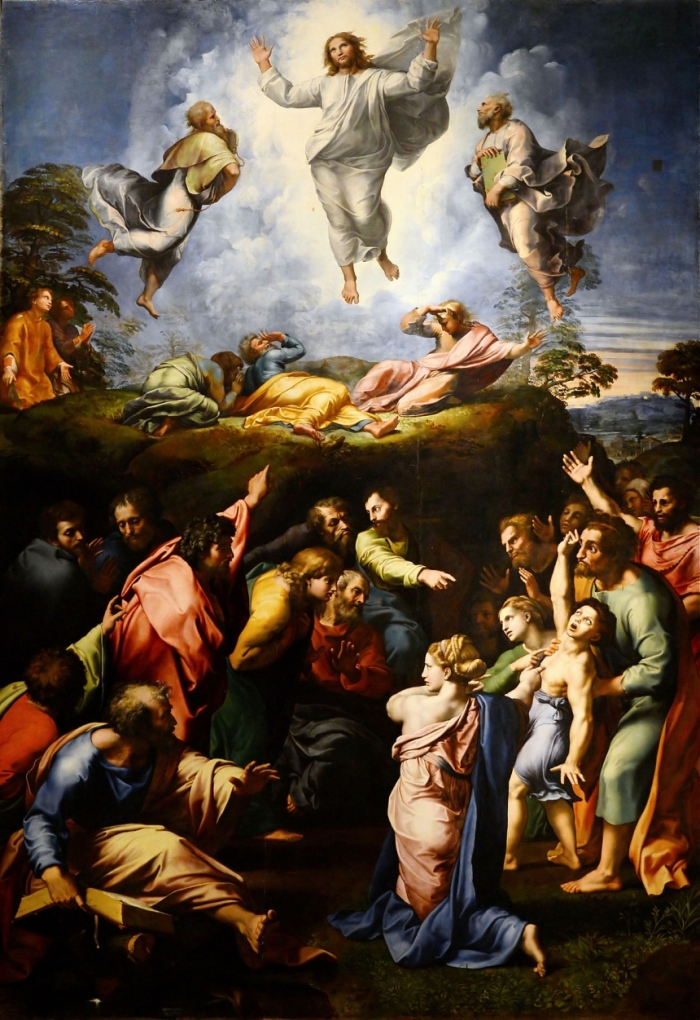 The transfiguration of Christ was a popular scene to depict at the time. Transfiguration describes the occasion when Jesus took three of his disciples, Peter, James, and John, up on a mountain, where Moses and Elijah appeared and Jesus was transfigured, his face and clothes becoming dazzlingly bright. [Mark 9:2–13; Matthew 17:1–13; Luke 9:28–36] Raphael, possibly trying to one-up Michelangelo once again, decided to combine two biblical scenes in his version. The bottom half shows a boy being exorcised of his demons; the top half portrays Jesus gloriously reveling in his body’s divine glory, awing his onlookers before he ascends into heaven. The painting is unique: there is no artistic tradition for this combination, and no interpretation offers much insight. Transfiguration remains one of Raphael's most controversial works, largely due to the fact that it was his last before his untimely death on April 6, 1520 - his 37th birthday - from a fever supposedly induced by too much sex with his mistress. |